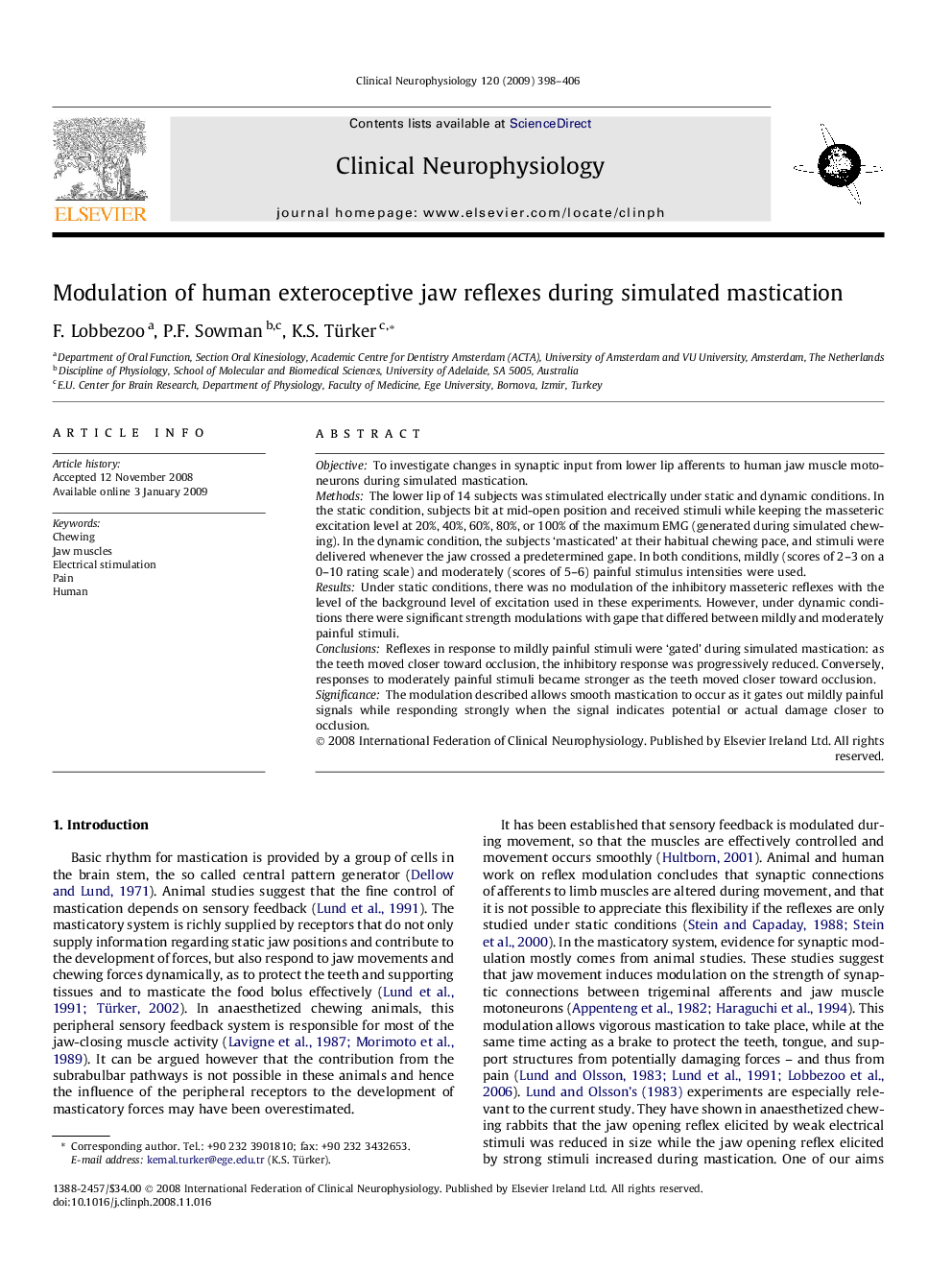| Article ID | Journal | Published Year | Pages | File Type |
|---|---|---|---|---|
| 3047136 | Clinical Neurophysiology | 2009 | 9 Pages |
ObjectiveTo investigate changes in synaptic input from lower lip afferents to human jaw muscle motoneurons during simulated mastication.MethodsThe lower lip of 14 subjects was stimulated electrically under static and dynamic conditions. In the static condition, subjects bit at mid-open position and received stimuli while keeping the masseteric excitation level at 20%, 40%, 60%, 80%, or 100% of the maximum EMG (generated during simulated chewing). In the dynamic condition, the subjects ‘masticated’ at their habitual chewing pace, and stimuli were delivered whenever the jaw crossed a predetermined gape. In both conditions, mildly (scores of 2–3 on a 0–10 rating scale) and moderately (scores of 5–6) painful stimulus intensities were used.ResultsUnder static conditions, there was no modulation of the inhibitory masseteric reflexes with the level of the background level of excitation used in these experiments. However, under dynamic conditions there were significant strength modulations with gape that differed between mildly and moderately painful stimuli.ConclusionsReflexes in response to mildly painful stimuli were ‘gated’ during simulated mastication: as the teeth moved closer toward occlusion, the inhibitory response was progressively reduced. Conversely, responses to moderately painful stimuli became stronger as the teeth moved closer toward occlusion.SignificanceThe modulation described allows smooth mastication to occur as it gates out mildly painful signals while responding strongly when the signal indicates potential or actual damage closer to occlusion.
